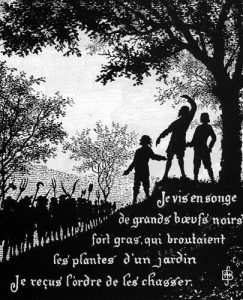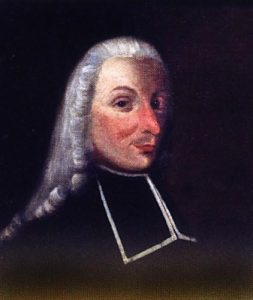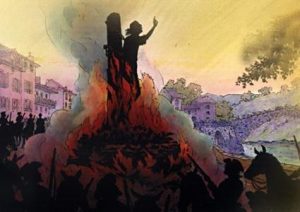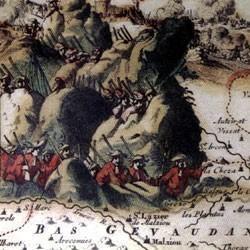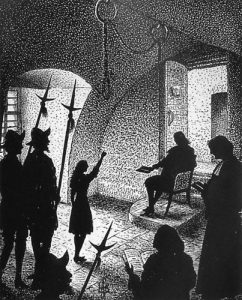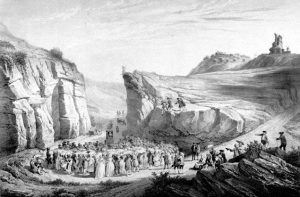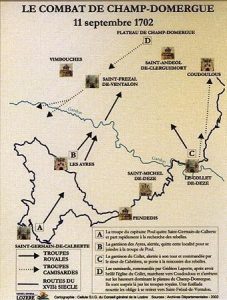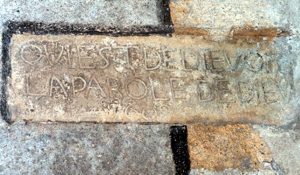Call to rebellion
The prophetic movement that spread throughout the Cévennes after 1700 first consisted in a call to conversion and an incentive to go back to reformed faith and worship.
But the prophets soon claimed that “(Catholic) churches shall be burnt down and there shall be great affliction.” (« que les églises (catholiques) seront brûlées et qu’il y aurait une grande désolation »). When faced with persecution, the prophets called for a holy war.
In his memoirs, one of these prophets, Abraham Mazel, told of a dream in which he saw black oxen in a garden and someone telling him to chase them away ; his inspired understanding was that the black oxen were priests and that he should take up weapons and fight against the persecutors.
Father du Chayla
From 1686 till 1702, 75 missionaries were successively sent to try and convert the Protestants of the Cévennes. This was done under the leadership of Father du Chayla, who was at the time mission inspector in the Hautes-Cévennes region. His anti-protestant zeal was well-known of the administrator Basville who relied on him for repression. The bishop of Mende was less energetic.
In mid-July 1702, the Father had 7 young people arrested on their way to Geneva. The 3 young women were locked in the monastery in Mende. The 4 young men and their guide were detained in Father du Chayla’s home. The news of the arrest quickly spread. On 22 July, 1702, the parents of the prisoners pleaded for the Father’s mercy ; but to no avail.
The night of 24 July
Camisards and historians consider that the murder of Father du Chayla triggered off the war of the Camisards on 24 July, 1702. According to his own writings, Abraham Mazel was “inspired” to go and free the prisoners from Father du Chayla at Pont-de-Monvert. With Esprit Séguier, near the Bougès mountain top, at a place called “Trois Fayards”, he gathered about sixty men in arms with 20 rifles and pistols.
The small group arrived at Pont-de-Monvert and fired a few shots in front of Father du Chayla’s unprotected house.
“What have you come for ?” the Father asked.
“We want the prisoners back, on God’s behalf.”
Such was the dialogue, according to Abraham Mazel’s memories.
As nothing stirred, he broke the door open and set fire to the staircase. The inhabitants jumped out of the windows and so did Father du Chayla who broke his leg. He was caught by the people in arms and put to death on the village bridge.
Escalation
On the following day the rebels killed two priests, one of them of the parish of Saint-André-de-Lancize. A little later they killed the inhabitants of the Devèze castle. The warning was given and royal troops invaded Pont-de-Monvert. Several rebel leaders were sentenced to death and executed in public, notably Esprit Séguier at Pont-de-Monvert (burnt alive), Moïse Bonnet in front of the Devèze castle and Pierre Nouvel in the church of Saint-André-de-Lancize.

